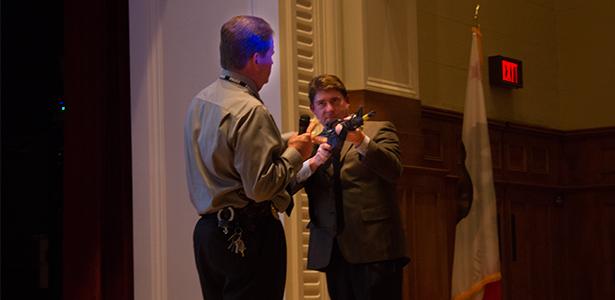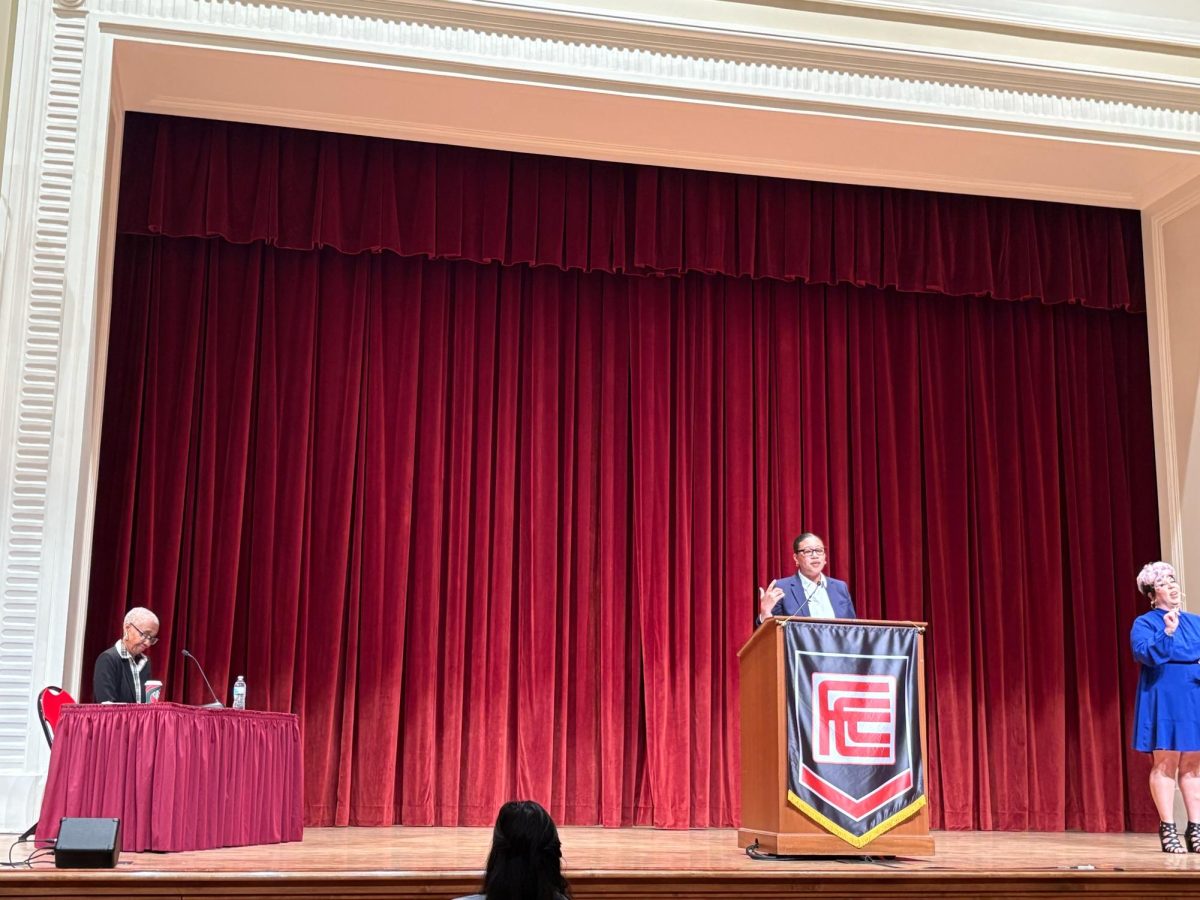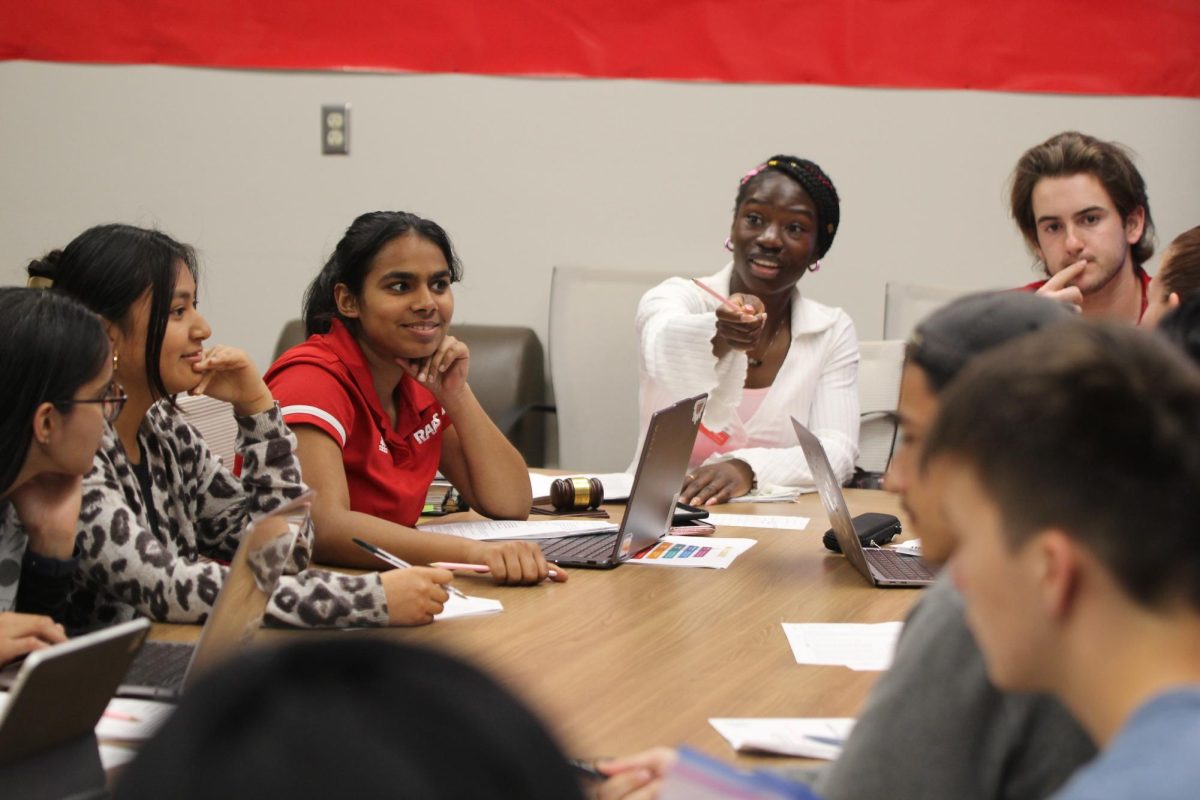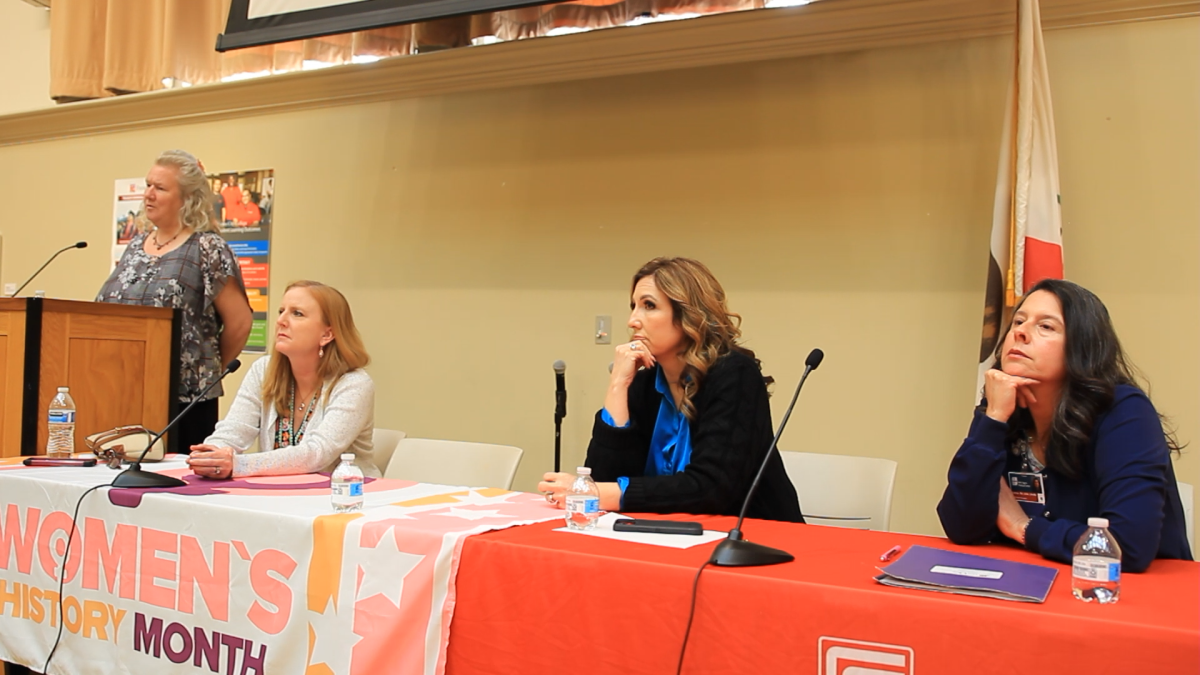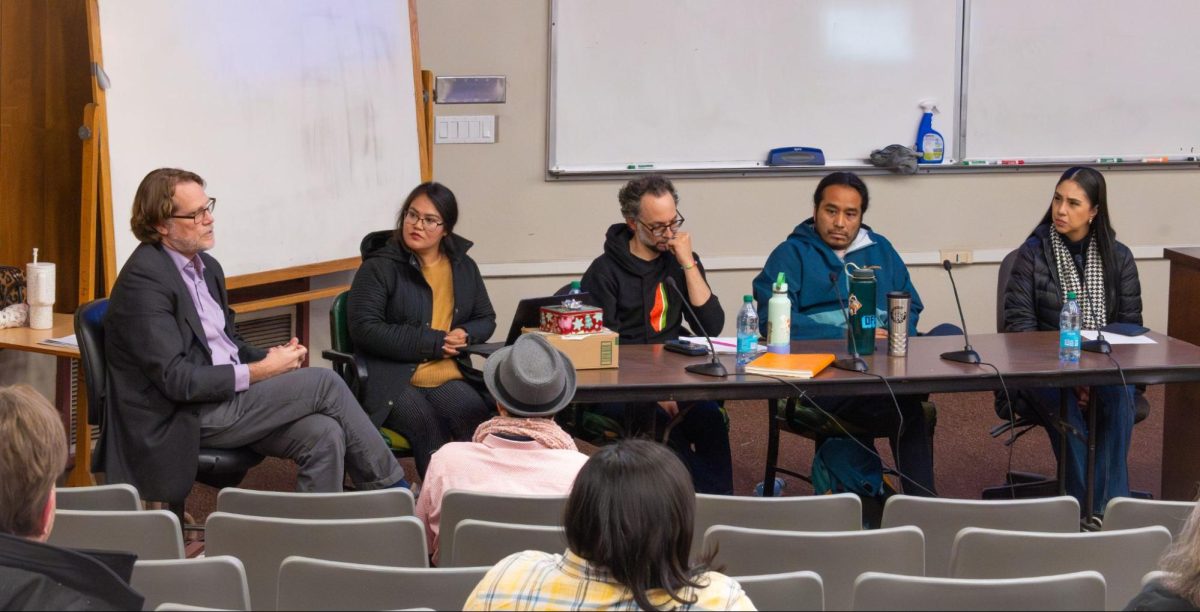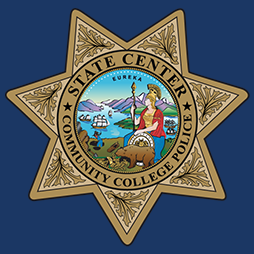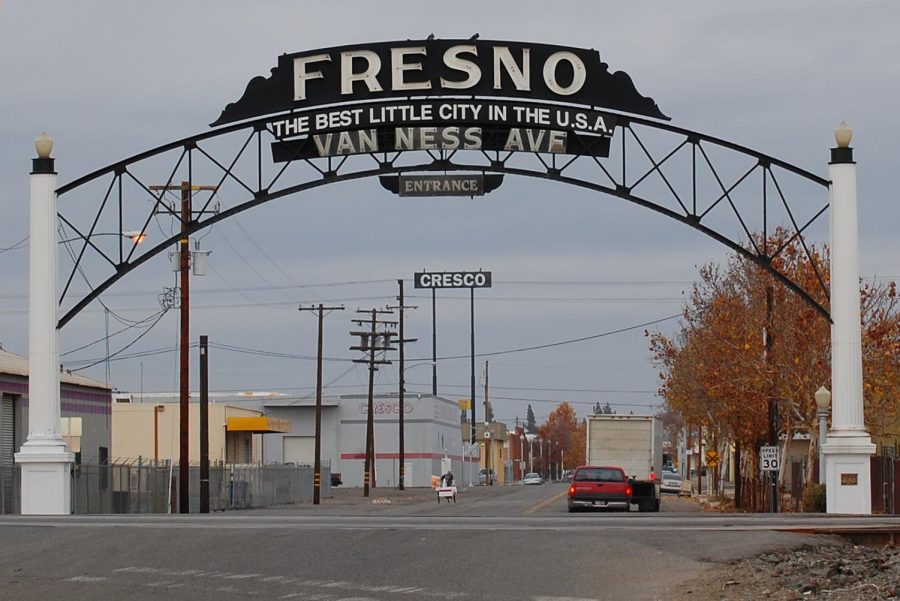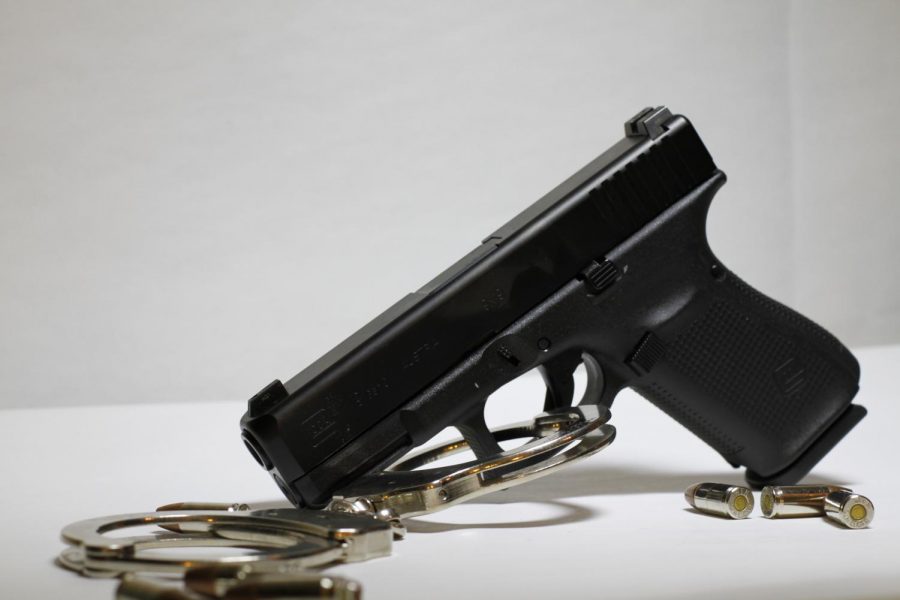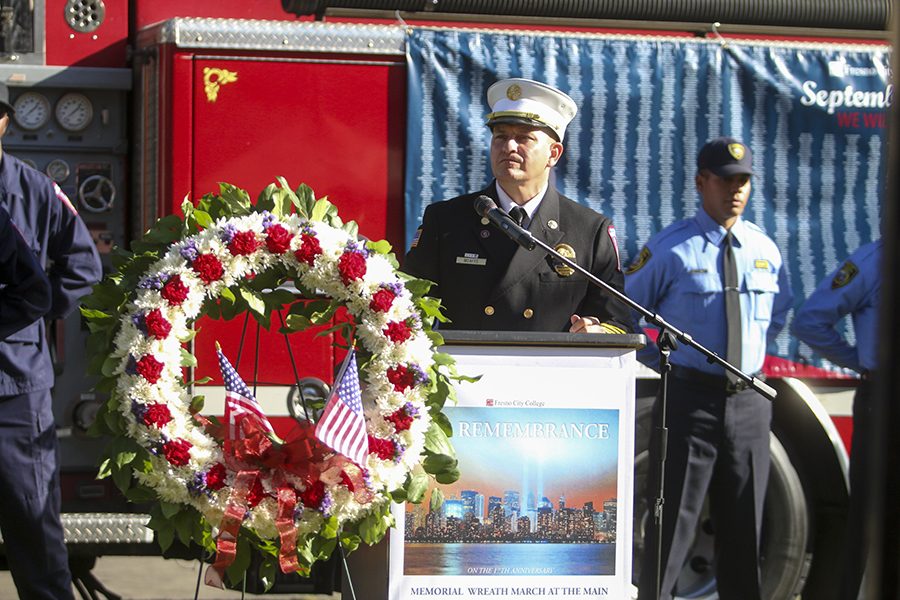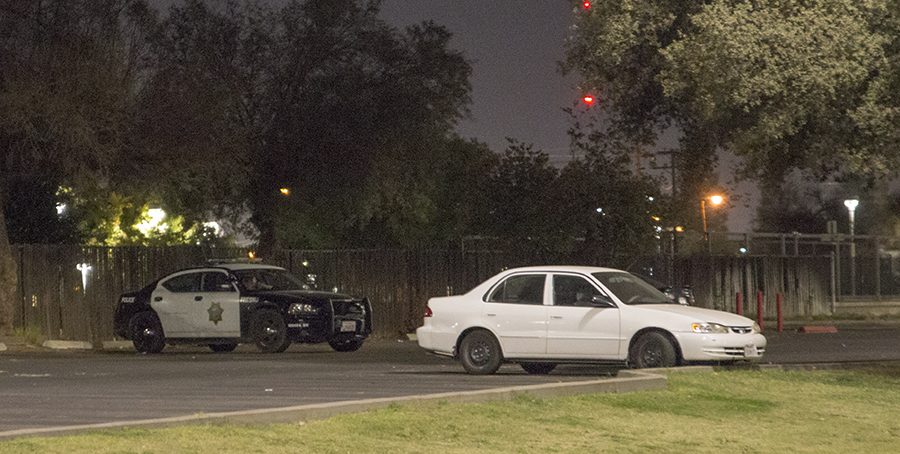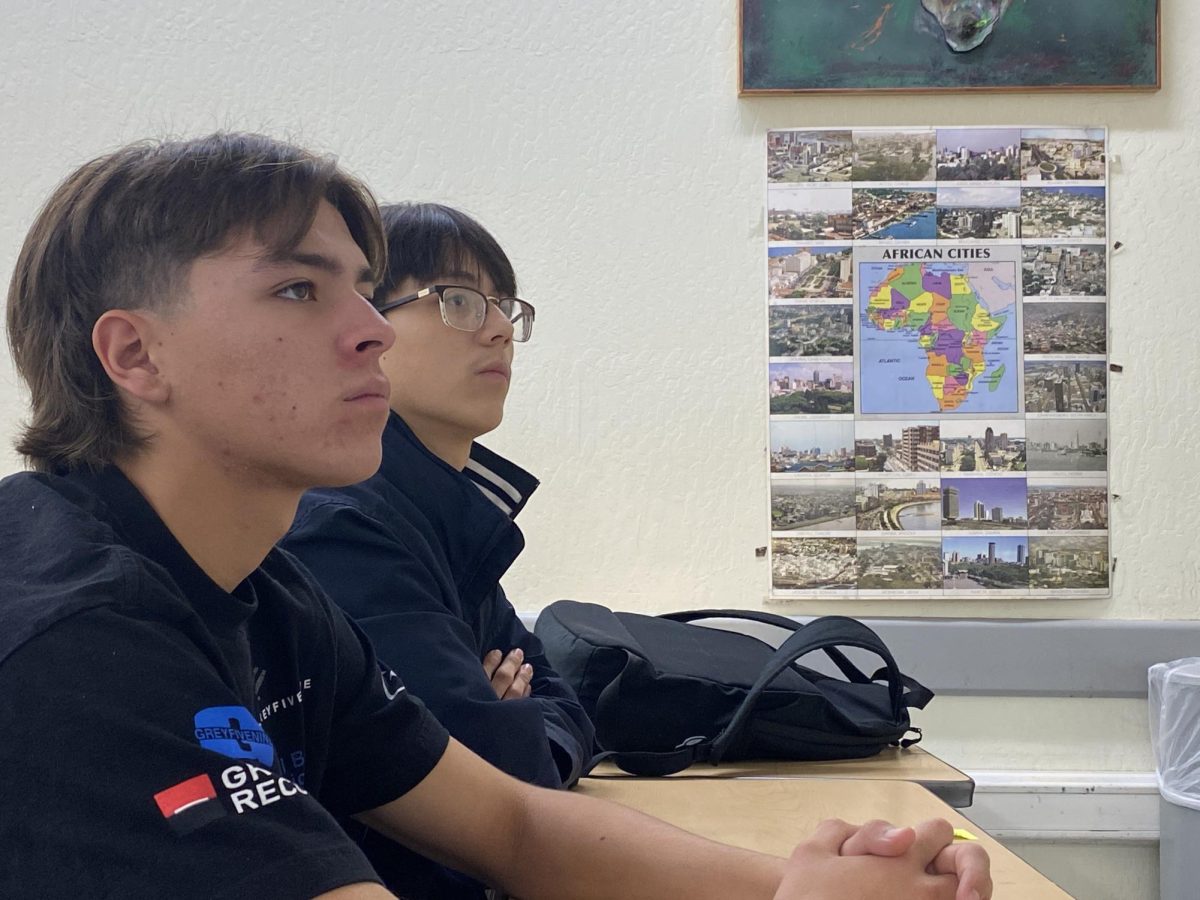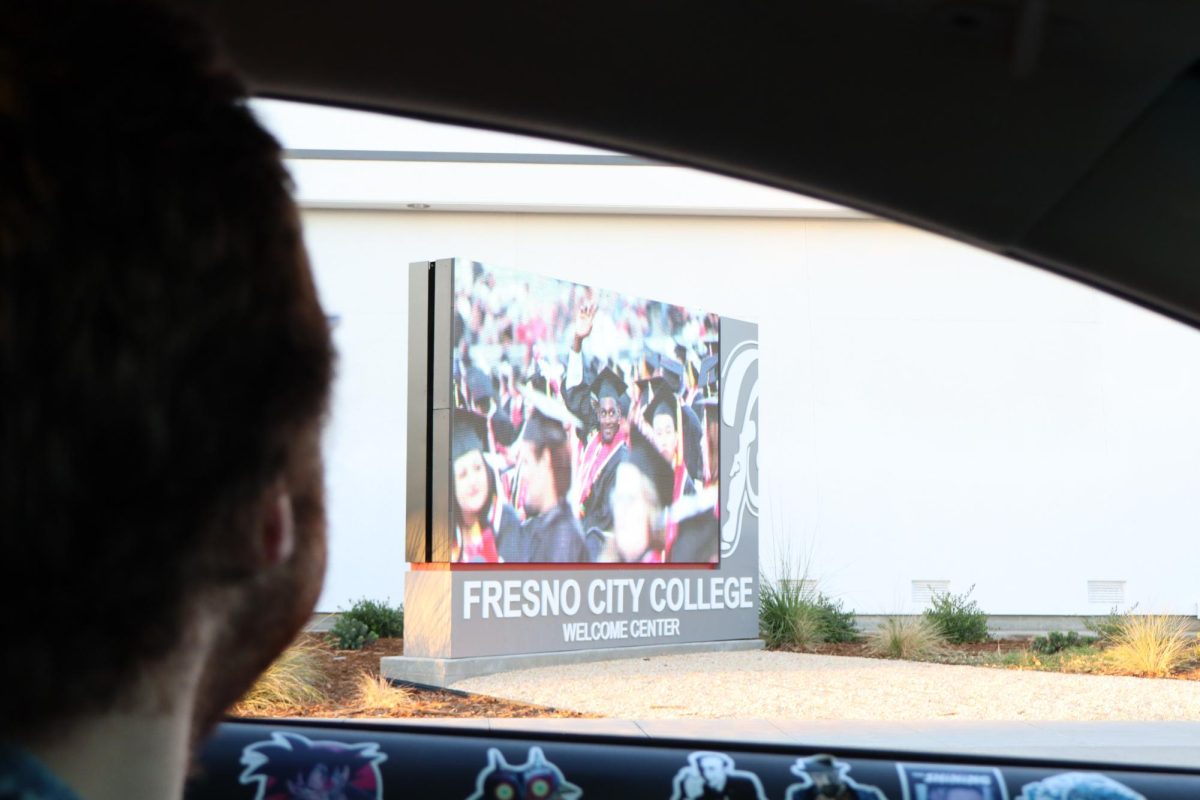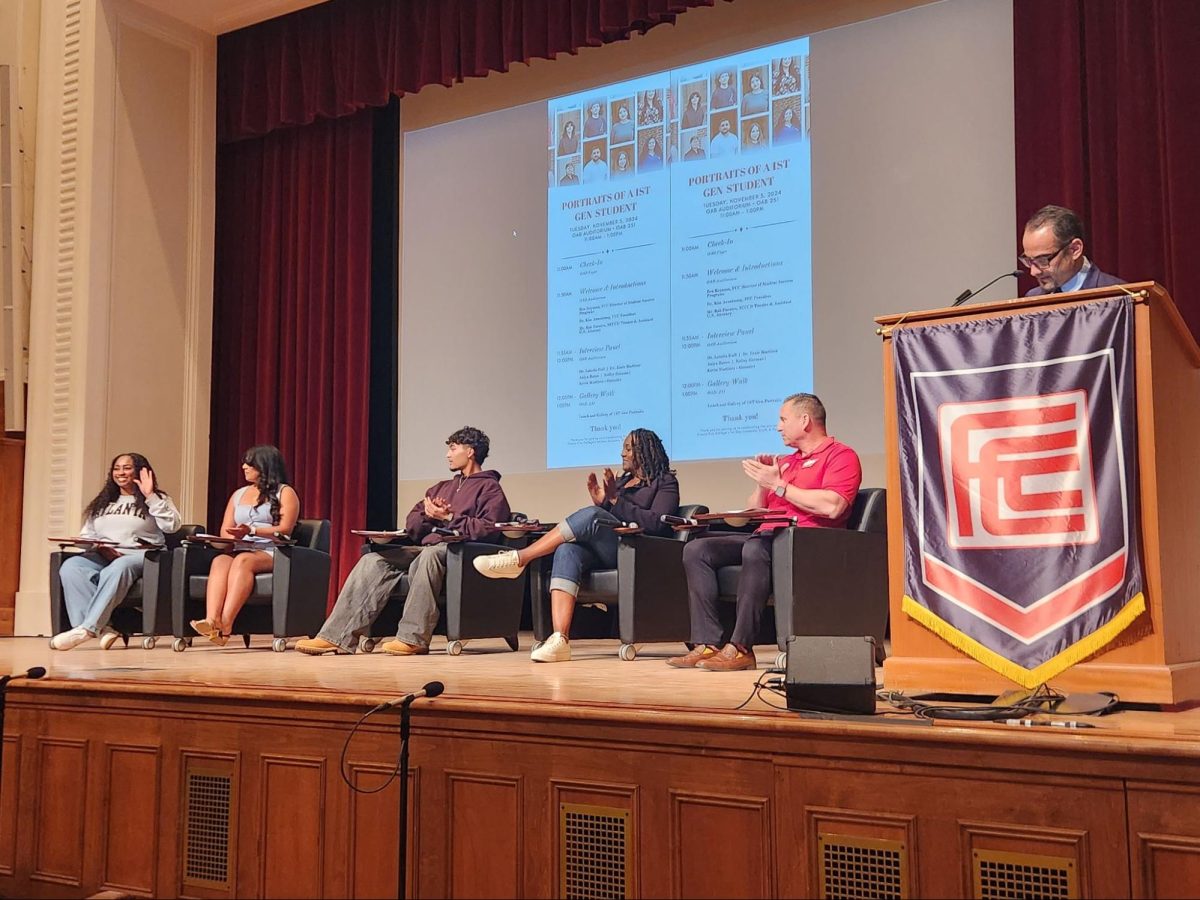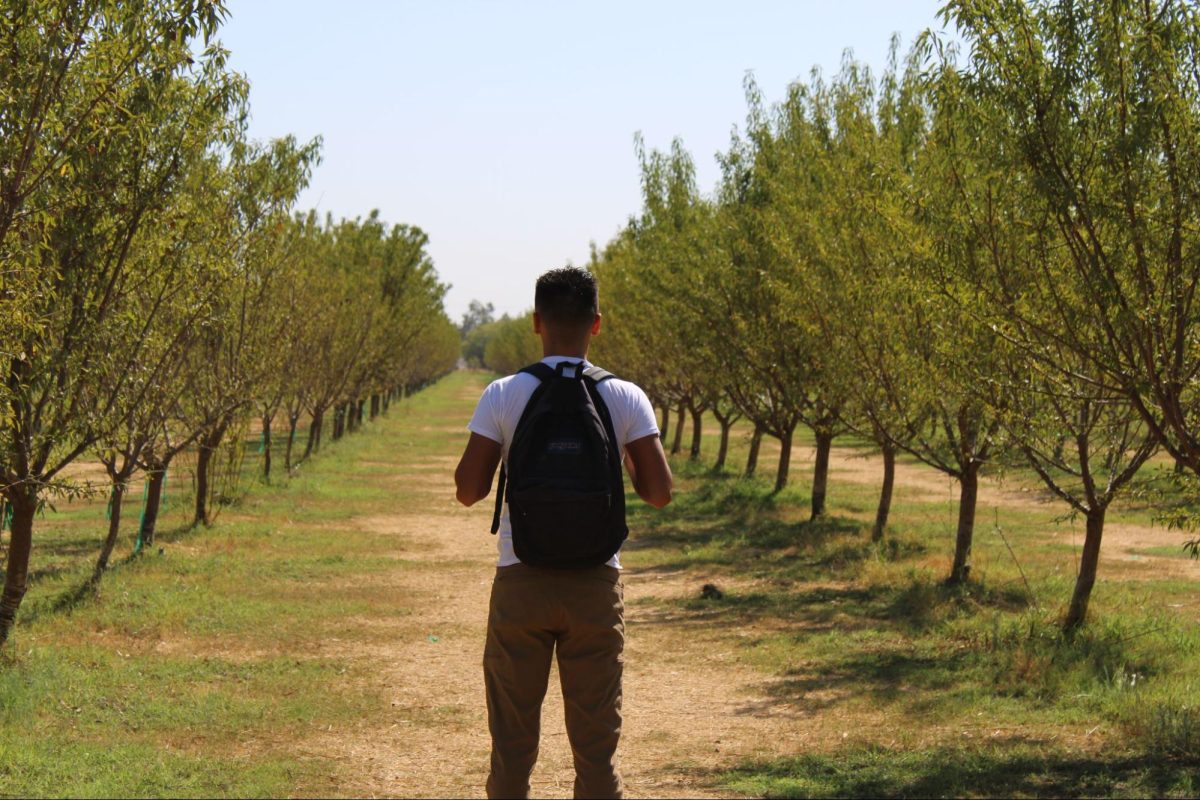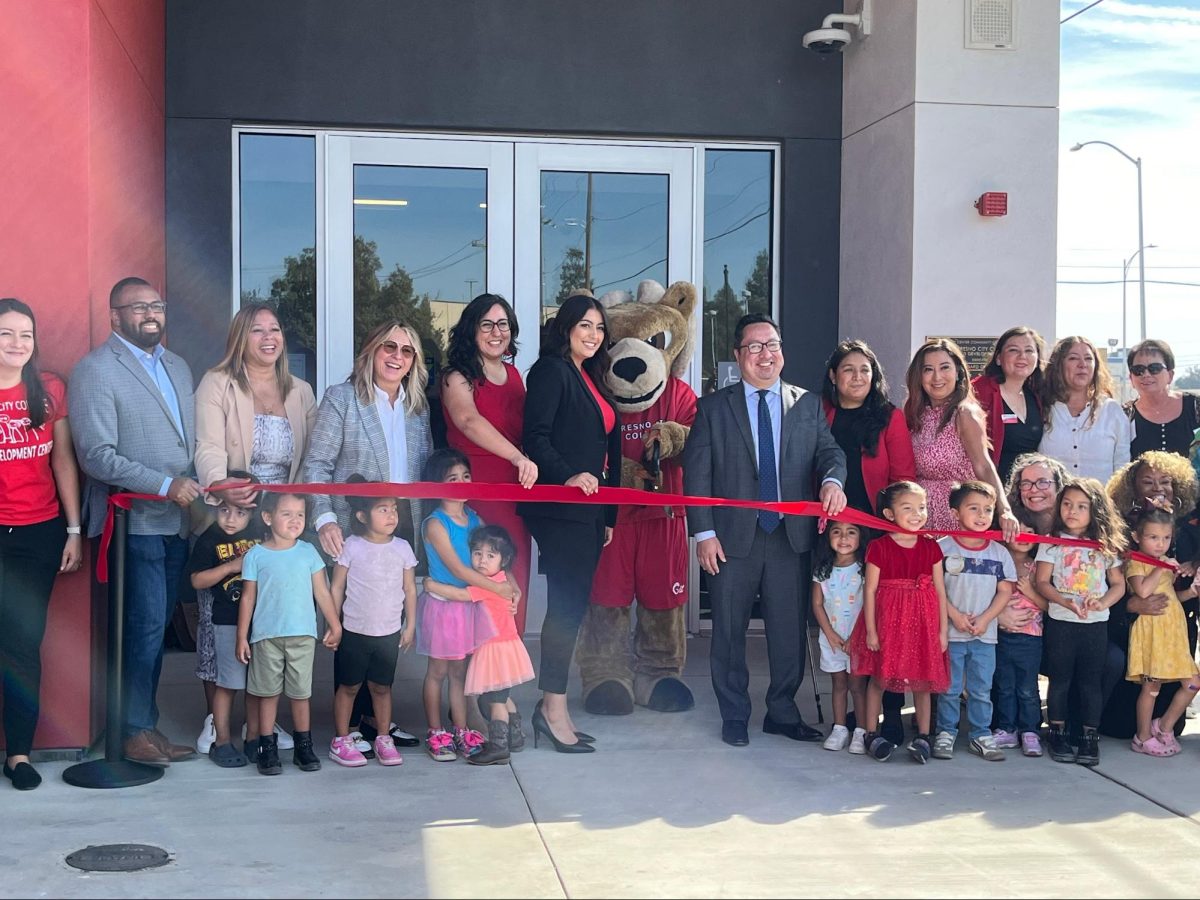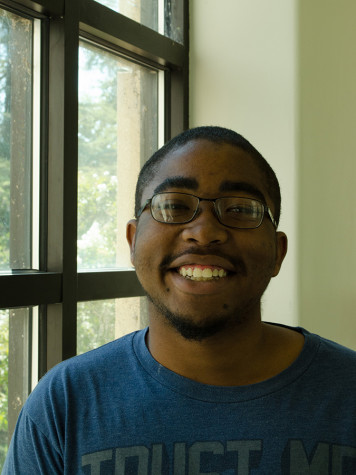Do you know what to do in the event of an active shooter on campus?
Run, hide and fight are the words to remember, according to State Center Community College District Chief of Police Bruce Hartman, who led an active shooter training session on Monday, Oct 28.
Around 100 students and staff attended the training as Chief Hartman and others went through exactly what you should do in the event of an active shooter on campus.
He began the training by giving the exact definition for what qualifies as an active shooter. This is, according to the National Tactical Officers Association, “one or more subjects who participate in a random or systematic shooting spree, demonstrating their intent to continuously harm others. An active shooter’s overriding objective appears to be that of mass murder, rather than criminal conduct such as robbery, kidnapping, etc. The definition of an active shooter can include any assault with a deadly weapon causing a mass homicide.”
He then explained the full spectrum of the ‘Run. Hide. Fight’ strategy by playing a video from Ready Houston, a group that is designed to provide emergency preparedness information.
According to the video, the first plan of action is to run. Evacuate the dangerous area, leave all of your belongings behind and once you are safe call 911.
The next priority on this list is to hide. Use large objects that will remove you from the shooter’s view but not restrict your options for movement, lock or barricade doors and remain silent.
And as a last resort fighting is an option. If you are in a situation where you must fight you will have to improvise weapons in an attempt to incapacitate the shooter, you must act with physical aggression and fully commit to your actions.
Near the end of the event Hartman, who was joined by State Center Community College District Environmental Health and Safety Director Darren Cousineau, brought out a collection of firearms that included both a revolver and a semi-automatic 9mm, which are both of the types of weapons used in the parking lot E shooting on Monday, Oct. 14.
They both demonstrated multiple ways to disarm a wide variety of weapons from short range in the event a shooter is to close and has the weapon pointed at you.
These trainings will be repeated on Nov. 1 at 10 a.m. and at 2 p.m. in the Old Administration Building Auditorium, as well as additional dates that will be scheduled throughout the academic year.
This is just the latest attempt to calm the rush of criticisms faced by the campus leadership and police department.
“I would like to, once again, reassure all students and staff that your safety is our number one concern while you are on campus,” said Fresno City College President Tony Cantu.
Many around campus have called into question the lack of communication after the incident and also the decision to not lock down the campus in the immediate aftermath.
“We ran into an issue with the Informacast, which you may know better as the phone system and the loudspeaker system,” said Hartman.
The issue, according to Hartman, is that due to the failings within the emergency alert system the first emails were sent to FCC students and staff 53 minutes after the shooting. Text messages went out even later, about 90 minutes after the shooting.
Hartman gave information on the shooting, announcing to the crowd that both of the individuals that fired shots in the parking lot are in custody and the weapons used are in the possession of the police.
“If any of these individuals had been known to have gone towards the campus, then we would have placed an immediate active shooter lockdown,” said Hartman. “But we did not want to cause a panic where there was not one at that time.”
Lawrence Edward Darrough, 18, and Darnell Thomas, 19, are the two men identified as suspects in the shooting. Hartman said they both will be charged with multiple offenses including discharging a firearm on a college campus. Neither were FCC students.
The two men were arrested later on Oct. 14 after robbing two Central High School students who were awaiting rides after school.
It was 10 hours after the initial call of shots fired on campus that the two men were arrested on Shaw and Brawley Avenues at nearly 9 p.m. Monday night.
After explaining the events to the public, there was a question and answer session.
Many students and staff members came in with questions but the entire theme of the day could be summed up by the exchange between Hartman and student Vernon Lacy Jr.
Lacy Jr. asked about the “protocol for a shooting on campus” and then later interrupted Hartman’s answer because he was not satisfied with the answer as it was being given.
Lacy Jr. was not alone, there were many dissatisfied students and staff members in attendance awaiting the answers for Monday’s failures, and the danger that some believe that they were placed in.
“I am thankful of course that there wasn’t an actual active shooter on the campus,” said Cantu, “but the situation has allowed us to take a look at where the gaps are in our process and now we can be proactive in addressing them.”
Two students who expressed dissatisfaction were Summer Calderas and Krystal Brock, two theater majors who had just left the Theater Building that morning and were on their way toward parking lot E when they heard the gun shots.
“We were in the middle of the crosswalk and that’s when we heard the [gunshots] going off,” said Brock.
After escaping back into the Theater Building, the two hoped to find an instructor to receive clear instructions on what they should do.
“When we first went back into the building, we ran to the costume shop where we thought one of the teachers would be and she wasn’t in there,” said Brock.
“So at that point we decided that we should just barricade ourselves because we didn’t know if the shooter was coming on campus or coming into classrooms and we didn’t even know where they were shooting.”
The lack of instruction and information has many people who were on the campus flustered.
“If I would have gotten a text message within two minutes letting me know that there was an actual shooting and the police were on the scene and that it was being handled I would have felt a lot better,” said Brock.
And although there were many flaws in the response system and negative reactions coming from the students and staff who felt left in the dark, many also recognize just how lucky the community is that no one was hurt in this incident.
“I think that because of this incident this could make us a stronger school,” said Calderas, “and [give us] a better system so that something like this can never happen again.”

